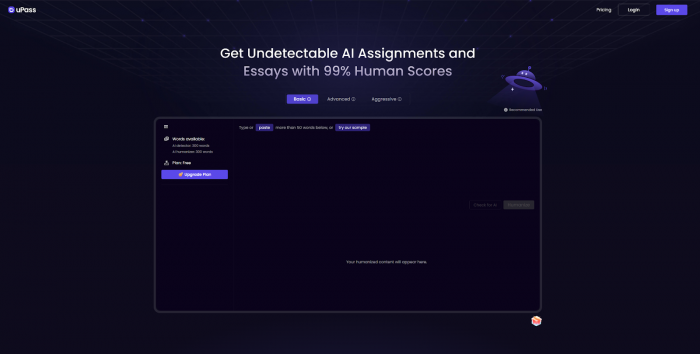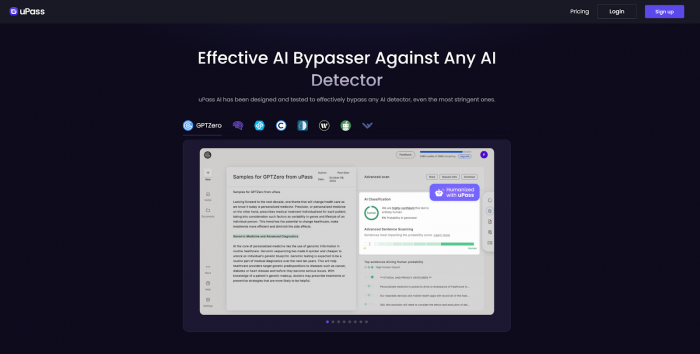

In 2025, GPTZero remains one of the most widely used AI detector tools, analyzing text for AI signatures via metrics like perplexity and burstiness. Many students and professionals seek reliable AI humanizers to ensure AI-assisted content appears human—and uPass AI is designed specifically for that purpose.
This guide explains, in detail, how to use uPass AI to bypass GPTZero with the highest chances of success.
Although uPass includes its own built-in AI detector, it’s often helpful to have a baseline:
GPTZero typically flags AI content using metrics like low perplexity (high predictability) and low burstiness (uniformity).
Knowing how GPTZero scores your text provides a reference point to compare after humanization.

Go to the homepage of uPass. If you don’t already have an account, sign up—there’s a free tier with 300 words per month.
The interface consists of:
uPass offers three levels of humanization:
Tip: To bypass GPTZero, start with Advanced. If the result still flags as AI, switch to Aggressive.
With your chosen mode selected, click “Humanize”. uPass uses deep-learning models to:
The process is fast—typically a few seconds for a paragraph.
Once humanized output appears, read it through. Indicators it’s working:
If any parts read awkward or overly verbose, edit manually—for example, remove redundant phrases or adjust transitions. But avoid extensive rewrites after uPass, which could reintroduce detectable patterns.
After humanization, click the detector button. uPass will cross-check your content against AI tools like GPTZero, ZeroGPT, and Copyleaks.
This built-in detection shows immediate results—often faster than running GPTZero separately.
Look for low AI probability scores or no flags per sentence. If results are borderline, go back to step 4 and try Aggressive mode.
To confirm uPass effectiveness:
You should see significantly lower AI-generated probability—often under 10%, ideally 0–5%—and no sentences flagged

GPTZero and similar AI detectors analyze:
uPass AI addresses all of these by:
Enhance the process with these strategies:
By following this step-by-step guide, you can effectively use uPass AI as an AI bypasser, minimizing GPTZero detection risks. The workflow empowers users with:
With a solid process and these best practices, you can consistently produce polished, human‑like content ready for publication or submission—without triggering AI detectors.
Be the first to post comment!